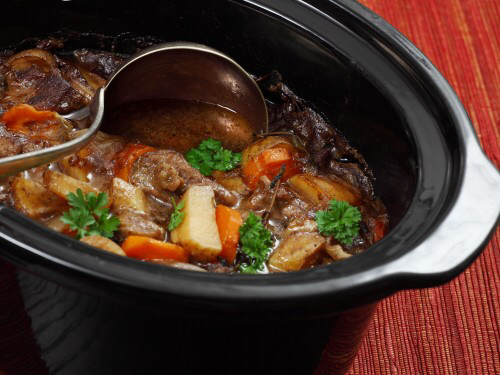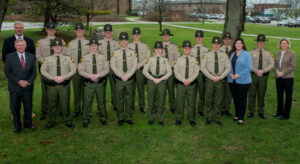Chow Line: Saving money on meals using slow cookers


Chow Line: Saving money on meals using slow cookers
One of my resolutions this year is to eat healthier but save time and money on food. Got any ideas?
One easy, budget-friendly way to save money, time, and energy on food at home is to prepare a hearty meal using a slow cooker.
Not only are slow cookers convenient, but they can also help families save money by making less expensive, tougher cuts of meat—such as shoulder, round, and chuck steak—more tender and shrink less. That’s a significant consideration for many, considering that food prices are forecast to increase this year, according to the U.S. Department of Agriculture’s Economic Research Service.
Their research found that food purchased at grocery stores is projected to increase an additional 1% to 2%, and food-away-from-home is projected to increase between 2% and 3% in 2021.
As mentioned in a previous Chow Line, when using a slow cooker, however, there are some precautions you should take to ensure that the meals you cook are both safe and nutritious to eat. For example, two of the more popular food items to prepare using a slow cooker are meats and poultry, which need to be time- and temperature-controlled for safety.
According to the USDA’s Food Safety and Inspection Service, it’s important to avoid cooking frozen meats and poultry in a slow cooker. Always thaw them first. This is because frozen beef and poultry won’t reach 140 degrees Fahrenheit quickly enough, which could cause a foodborne illness.
Slow cookers work by cooking foods at lower temperatures—typically between 170 to 280 degrees—for several hours. This could be a concern for some foods because the bacteria that cause food poisoning multiply quickest in the “danger zone” between 40 and 140 degrees, according to Foodsafety.gov.
Use a food thermometer to accurately determine if your food has reached the proper internal temperature to kill harmful bacteria.
Here are some other tips from the USDA:
- Keep perishable foods, especially presliced vegetables, refrigerated and out of the danger zone. Bacteria multiply rapidly when at room temperature. To avoid this, keep your food refrigerated until it’s time to add it to the slow cooker.
- Make sure your foods fit. The slow cooker should be half to two-thirds full to ensure your food cooks thoroughly.
- Position foods that take longer to cook on the bottom of the slow cooker, then arrange other solid ingredients on top, making sure to spread them out evenly.
- Keep the lid on. It’s important to retain the heat when making a slow cooker meal. Only remove the lid to stir or check for doneness.
- If possible, turn the cooker on the highest setting for the first hour of cooking time and then to low or the setting called for in your recipe. However, it’s safe to cook foods on low the entire time.
- Foods take different times to cook depending on the setting used. While foods will cook faster on high than on low, for all-day cooking or for less tender cuts, you may want to use the low setting.
- If you have any leftovers, it’s important to store them in a shallow, covered container in the refrigerator within two hours after being cooked. And, when reheating leftovers, don’t use your slow cooker. Use your stove top, microwave, or conventional oven to heat the food to at least 165 degrees before eating it.
Chow Line is a service of The Ohio State University College of Food, Agricultural, and Environmental Sciences and its outreach and research arms, Ohio State University Extension and the Ohio Agricultural Research and Development Center. Send questions to Chow Line author Tracy Turner, 364 W. Lane Ave., Suite B120, Columbus, OH 43201, or [email protected].






